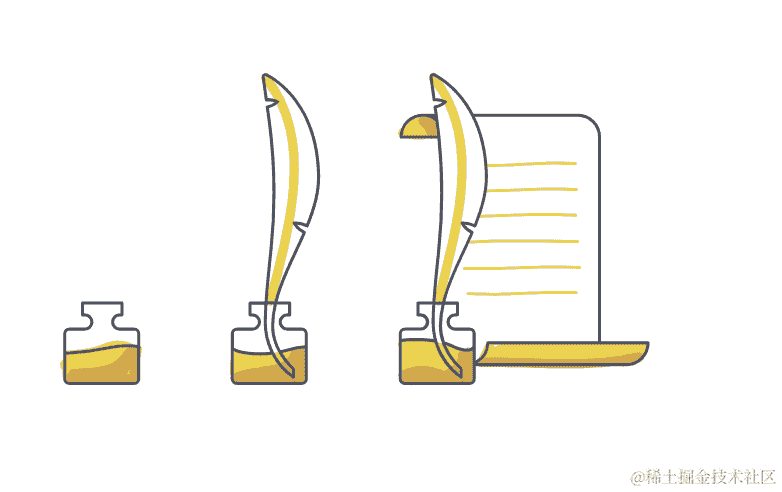返回
从零入门Vue3响应式,带你直达巅峰!
前端
2024-02-06 07:26:13
初露锋芒:案例试水
首先,我们从一个简单的案例开始,熟悉一下Vue3响应式系统的基本概念和用法。
<div id="app">
<p>{{ message }}</p>
<button @click="changeMessage">改变信息</button>
</div>
const app = Vue.createApp({
data() {
return {
message: 'Hello, Vue!'
}
},
methods: {
changeMessage() {
this.message = '你好,Vue!'
}
}
})
app.mount('#app')
在这个简单的案例中,我们使用了一个<p>元素来显示message数据,并使用了一个按钮来触发changeMessage方法。当点击按钮时,message数据将被更新,并且<p>元素中的内容也会随之更新。
深入核心:源码解析
接下来,我们深入到Vue3响应式系统的源码中,看看它是如何工作的。
1. 数据劫持
Vue3使用数据劫持的方式来实现响应式系统。数据劫持是指,Vue3会劫持数据对象的属性,并在属性被修改时触发相应的更新操作。
2. 依赖收集
当Vue3组件首次渲染时,它会收集组件中所有被模板使用的属性的依赖。当这些属性被修改时,Vue3就会触发相应的更新操作。
3. 虚拟DOM
Vue3使用虚拟DOM来实现高效的更新。虚拟DOM是一个轻量级的DOM表示,它可以快速地被更新。当数据发生变化时,Vue3会重新渲染虚拟DOM,然后将更新后的虚拟DOM与之前的虚拟DOM进行比较,只更新发生变化的部分。
亲自动手:手写实现
在理解了Vue3响应式系统的基本原理之后,我们可以尝试自己动手实现一个简单的响应式系统。
class Reactive {
constructor(obj) {
this.obj = obj
this.walk(obj)
}
walk(obj) {
Object.keys(obj).forEach(key => {
this.defineReactive(obj, key, obj[key])
})
}
defineReactive(obj, key, value) {
const dep = new Dep()
Object.defineProperty(obj, key, {
get() {
dep.depend()
return value
},
set(newValue) {
if (newValue !== value) {
value = newValue
dep.notify()
}
}
})
}
}
class Dep {
constructor() {
this.subs = []
}
depend() {
this.subs.push(Dep.target)
}
notify() {
this.subs.forEach(sub => sub.update())
}
}
Dep.target = null
class Watcher {
constructor(vm, expr, cb) {
this.vm = vm
this.expr = expr
this.cb = cb
this.value = this.get()
}
get() {
Dep.target = this
const value = this.vm[this.expr]
Dep.target = null
return value
}
update() {
const newValue = this.get()
if (newValue !== this.value) {
this.cb(newValue, this.value)
this.value = newValue
}
}
}
class Vue {
constructor(options) {
this.$options = options
this.$data = options.data()
this.proxyData()
this.observe(this.$data)
this.compile()
}
proxyData() {
Object.keys(this.$data).forEach(key => {
Object.defineProperty(this, key, {
get() {
return this.$data[key]
},
set(newValue) {
this.$data[key] = newValue
}
})
})
}
observe(obj) {
new Reactive(obj)
}
compile() {
// 省略实现
}
}
const vm = new Vue({
data() {
return {
message: 'Hello, Vue!'
}
}
})
vm.message = '你好,Vue!'
这个简单的响应式系统可以实现基本的数据绑定功能。当vm.message的数据发生变化时,<p>元素中的内容也会随之更新。
更多实战,更深理解
除了上述内容之外,我们还可以继续深入学习Vue3响应式系统,比如:
- 如何使用
computed和watch来优化响应式性能 - 如何使用事件监听来响应用户交互
- 如何使用模板来定义组件的结构
- 如何使用
Props和States来传递数据和状态 - 如何使用
Methods来定义组件的方法
通过学习这些内容,我们可以更加深入地理解Vue3响应式系统的原理和使用方法。
结语
本文从一个简单的案例出发,逐步深入到Vue3响应式系统的源码实现和手写实现,全面解析了Vue3响应式原理。初学者、进阶者均可轻松掌握。跟着我,一步步登顶Vue3响应式技术巅峰!



